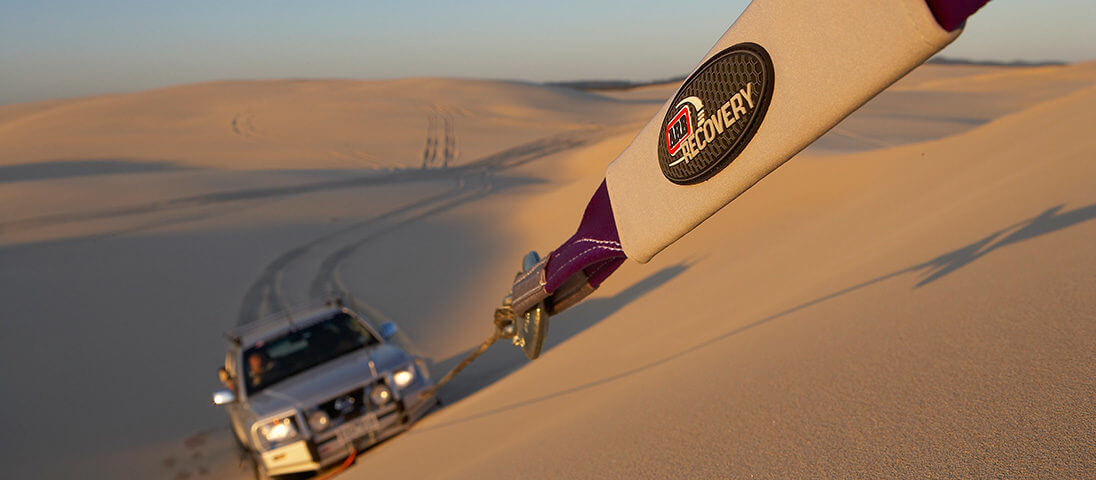Subscribe to ARB
Subscribe to ARB to receive your regular 4x4 CULTURE magazine, exclusive ARB promotional news and new product release information.
26th May, 2013

Dear ARB,
I enjoy receiving your informative mag in the mail each season
to catch up on the great destinations our marvellous country
has on offer, and to find out which ARB products will best help
me get there and back safely. During a recent trip to the Coorong
region of SA, a question arose between the travellers in our group
and this is what I’m hoping you can answer.
Everyone knows how to do a snatch recovery, and everyone
knows how to join two snatch straps, and never to use a shackle
between them (or at least they should). My question is, can
you use a winch extension strap combined with a snatch strap
to increase length for recovery? Obviously you would need to
ascertain that the straps both have an adequate load rating.
Is this an acceptable practice or is the shock loading of a snatch
recovery too much for a winch extension strap to safely bear?
I’d love to hear what you guys have to say about this. Thanks
heaps and I’m looking forward to the next instalment.
Nick
Hi Nick,
Some of the best recovery techniques are devised and argued around the campfire when travelling with groups. Everyone’s experience in a recovery situation can vary greatly, as does the terrain they find themselves stuck in.
But before getting too deep into discussion about what gear to use when, the most important thing to consider is the safety of those involved in the recovery, as well as the vehicle’s. Manufacturers of recovery straps use different materials and webbing weaves to produce a strap of the correct strength, and an understanding of the differences between a snatch strap and a winch extension strap is important for safety.
Snatch straps are typically manufactured from nylon webbing. The thickness, width and weave all play a part in allowing the strap to stretch and absorb the energy involved in a recovery. What is very important is that by the simple nature of stretching, shock loads on recovery points are reduced, and the stored kinetic energy helps recover the vehicle. Snatch straps are typically designed to stretch by at least 20%. The more they stretch the less shock is placed on the recovery point.
Winch extension straps, however, are usually made from polyester fibre and use a weave that produces minimal amounts of stretch (typically under 5%). When winching, you want little or no stretch for two reasons: a) because any stretch requires the use of more cable before the vehicle begins to move; and b) because in the event of
failure of the strap or cable, less elasticity reduces the likelihood of dangerous projectiles injuring people and property. But with little or no stretch, a winch extension strap is more susceptible to damage from shock loads.
So, should we use a winch extension strap in conjunction with a snatch strap? If we put safety first and the recommendations of the manufacturer, then the answer is no. The issue is that the winch extension strap is not designed to handle shock loads. One could argue that the snatch strap would stretch and reduce any shock load on the winch extension, but the thing to keep in mind is that the minimum rated sized snatch strap is typically 8000kg and can be as high as 15,000kg, whereas winch extension straps (such as ARB’s) are rated at 4500kg or 8000kg. So there is a good possibility that if the forces are strong enough, the winch extension will be a weak link and may break, with the possibility of causing damage or injury.
So with safety in mind, always use a strap for its intended use only. Blue warning labels with the strap’s minimum breaking strength rating and its intended use can be found sewn into the eye at one end of the strap.
Mark ‘Lowmount’ Lowry
(Manager – Product Development & Evaluation)
Subscribe to ARB to receive your regular 4x4 CULTURE magazine, exclusive ARB promotional news and new product release information.